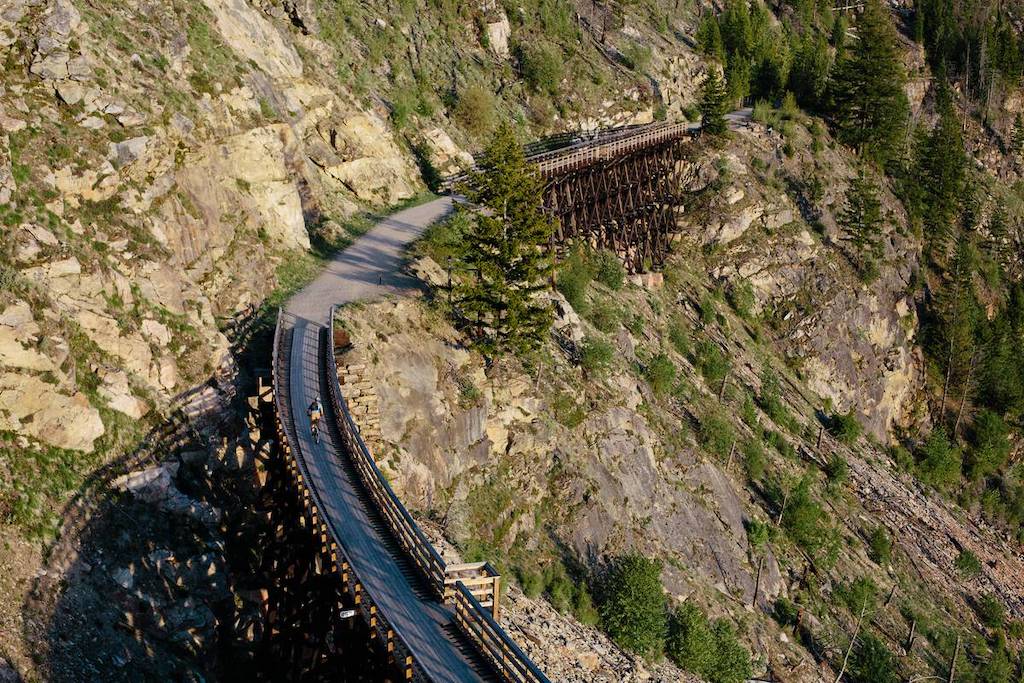Rail trails in Canada are the perfect blend of adventure, history, and nature. These trails, transformed from former railway lines, offer smooth, accessible paths through some of the country’s most breathtaking landscapes. From the towering mountains of British Columbia to the rolling hills of Quebec’s Laurentians, Canada’s top rail trails invite cyclists to explore the country’s natural beauty at their own pace. Let’s take a journey through the best rail trails in Canada, each providing a unique way to experience the great outdoors.
1. Kettle Valley Rail Trail (British Columbia)
Stretching over 600 kilometers, the Kettle Valley Rail Trail (KVR) is a must-ride for any serious cyclist or adventurer. This historic trail, part of the Trans Canada Trail system, runs through the stunning landscapes of southern British Columbia, including the Okanagan Valley, Myra Canyon, and the Similkameen Valley. The highlight for many riders is the Myra Canyon section, famous for its 18 trestle bridges and two tunnels that provide incredible views of the surrounding mountains and forests.
The KVR offers a mix of leisurely flat sections and more challenging, elevated areas. It’s a great option for multi-day bike trips, with small towns like Penticton, Kelowna, and Osoyoos offering opportunities for refueling, wine tasting, and relaxing by the lakes. Camping is available along much of the trail, making this a popular choice for cyclists looking for a self-contained adventure. The best time to ride the KVR is from late spring to early fall when the weather is warm, and the trail is clear.
Don’t miss a stop at Tin Whistle Brewing, where you can enjoy craft beers brewed right in Penticton.
Cycling the Myra Canyon section of the Kettle Valley Railway near Kelowna (photo: Destination BC/Grant Harder)
2. Le P’tit Train du Nord (Quebec)
Considered one of the most scenic rail trails in North America, Le P’tit Train du Nord is a 234-kilometer path that follows the old railway line through the heart of Quebec’s Laurentian region. The trail begins in the town of Saint-Jérôme and winds its way north to Mont-Laurier, passing through charming villages, lush forests, and alongside rivers and lakes.
What sets this trail apart is its accessibility and the many services available to cyclists. Converted train stations now serve as rest stops, and accommodations along the route cater specifically to trail users. You can take your time, riding from one town to the next, staying at cozy inns, and indulging in local cuisine. The trail is mostly flat with some gentle slopes, making it suitable for all levels of cyclists, whether you’re looking for a relaxing day trip or a multi-day tour.
Autumn is an especially beautiful time to visit, as the vibrant fall colors light up the surrounding forests, offering one of the most stunning views in all of Quebec.
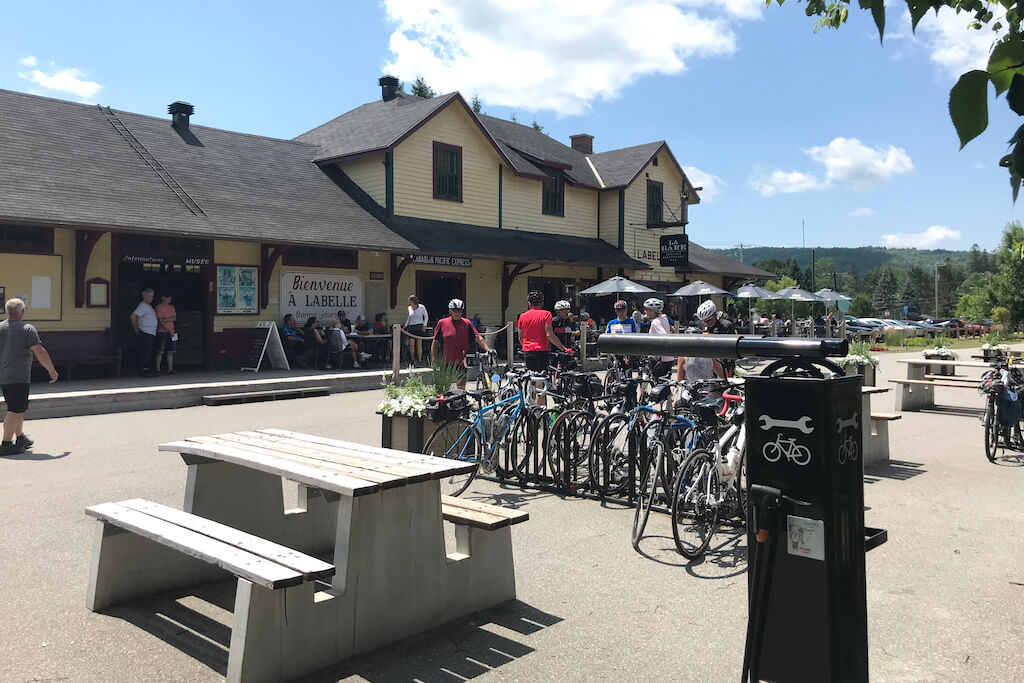
A stop at an old rail station on P’tit Train du Nord trail
3. Confederation Trail (Prince Edward Island)
PEI’s Confederation Trail is a 435-kilometer adventure that covers the island from tip to tip, offering breathtaking coastal views, rolling farmlands, and the iconic red sand beaches of the Maritimes. What makes this trail particularly special is its tranquil atmosphere, allowing cyclists to experience the quiet, scenic charm of Prince Edward Island at a leisurely pace.
The Confederation Trail is ideal for family cycling trips, thanks to its gentle grades and well-maintained crushed stone surface. Along the way, you’ll pass through picturesque small towns, and you can stop at various points of interest, such as heritage sites and provincial parks. The island’s hospitality is well-known, and cyclists will find plenty of bed-and-breakfasts, cafes, and rest stops along the route. The trail’s relatively short length makes it possible to cycle the whole route in a few days, while still leaving time to explore PEI’s famous seafood, beaches, and warm local culture.
4. Cowichan Valley Trail (British Columbia)
For a rail trail that combines wilderness with wine country, the Cowichan Valley Trail on Vancouver Island is an unmissable destination. Part of the larger Trans Canada Trail, this 122-kilometer trail runs through some of the island’s most beautiful and remote areas, offering cyclists a taste of rugged wilderness alongside views of sprawling vineyards.
The trail’s most iconic feature is the Kinsol Trestle, one of the largest wooden trestles in the world. At 44 meters high and 187 meters long, crossing this trestle is a highlight for cyclists, providing panoramic views of the surrounding forest. The Cowichan Valley Trail offers a mix of easy, rolling terrain and more challenging sections, making it accessible to both beginners and more seasoned riders.
Along the route, you’ll find charming local eateries, farm-to-table restaurants, and wineries that make perfect stops for refueling. This trail is a fantastic option for a weekend escape, offering a mix of nature, culture, and culinary delights.
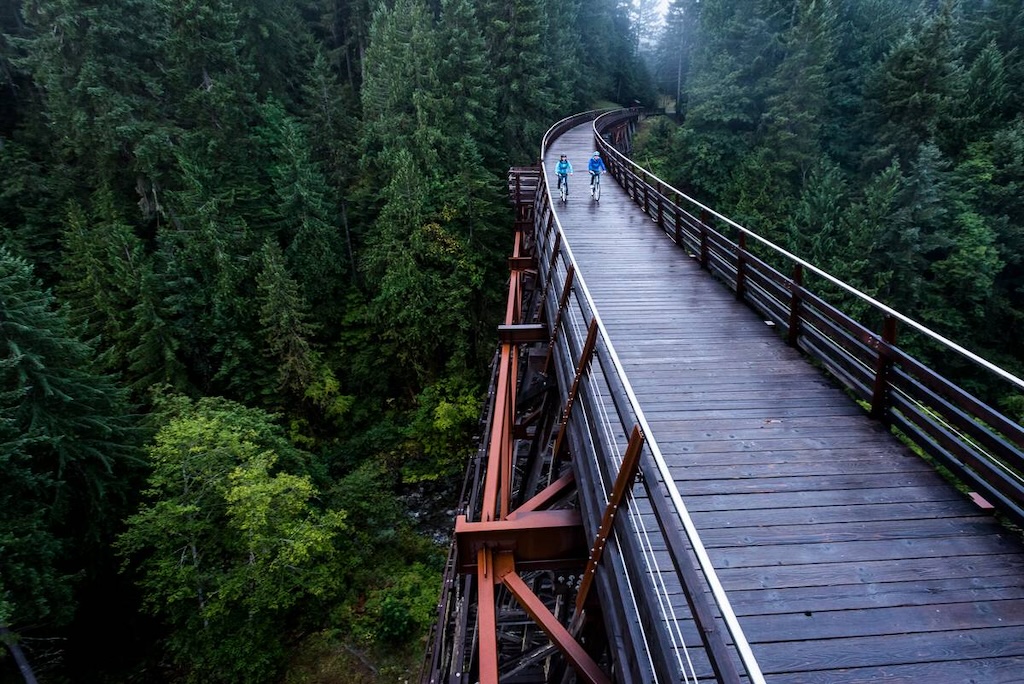
Couple cycling over Kinsol Trestle (Koksilah River Trestle) in the Cowichan Valley.
5. Galloping Goose Regional Trail (British Columbia)
Stretching 55 kilometers from Victoria to Sooke on Vancouver Island, the Galloping Goose Regional Trail is another gem of the West Coast. What makes this trail stand out is its diversity of scenery, from the bustling urban streets of Victoria to the serene, forested paths leading to the rugged coastline of Sooke. The trail is popular with both commuters and recreational cyclists, offering paved and gravel sections that are easy to navigate.
One of the highlights of the Galloping Goose Trail is its proximity to Goldstream Provincial Park, where you can stop to explore old-growth forests, waterfalls, and the annual salmon run in the fall. Cyclists looking for a multi-day adventure can connect the Galloping Goose with the Lochside Trail, creating a longer loop around the southern part of Vancouver Island.
Stop by The Stickleback West Coast Eatery in Sooke. This waterfront restaurant offers delicious local seafood and craft beers, making it an ideal ending point for a ride.
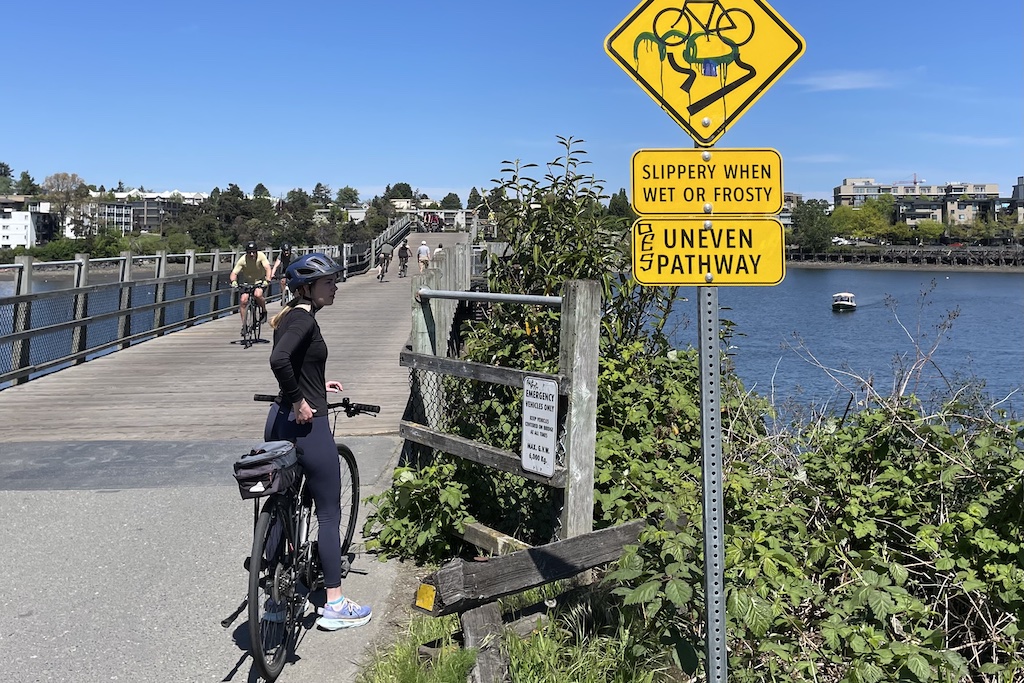
Galloping Goose Trail in Victoria is a popular tourism corridor for cyclists
6. Guelph to Goderich (G2G) Rail Trail (Ontario)
The Guelph to Goderich (G2G) Rail Trail stretches 127 kilometers through the heart of rural Ontario, offering a peaceful ride through forested areas, farmland, and charming small towns. This trail, which follows the former Guelph and Goderich Railway line, is perfect for cyclists who enjoy quiet, scenic routes with plenty of places to stop and explore.
The G2G trail is particularly beautiful in the fall when the leaves change color, turning the surrounding landscape into a mosaic of red, orange, and gold. The trail’s smooth, gravel surface is accessible for most bikes, and the route passes through towns like Blyth, of the delicious Cowbell Brewing and West Montrose, where you can visit local attractions, including historic bridges and artisan shops. At the trail’s western terminus in Goderich, cyclists are rewarded with views of Lake Huron and the chance to relax on one of Ontario’s prettiest beaches.
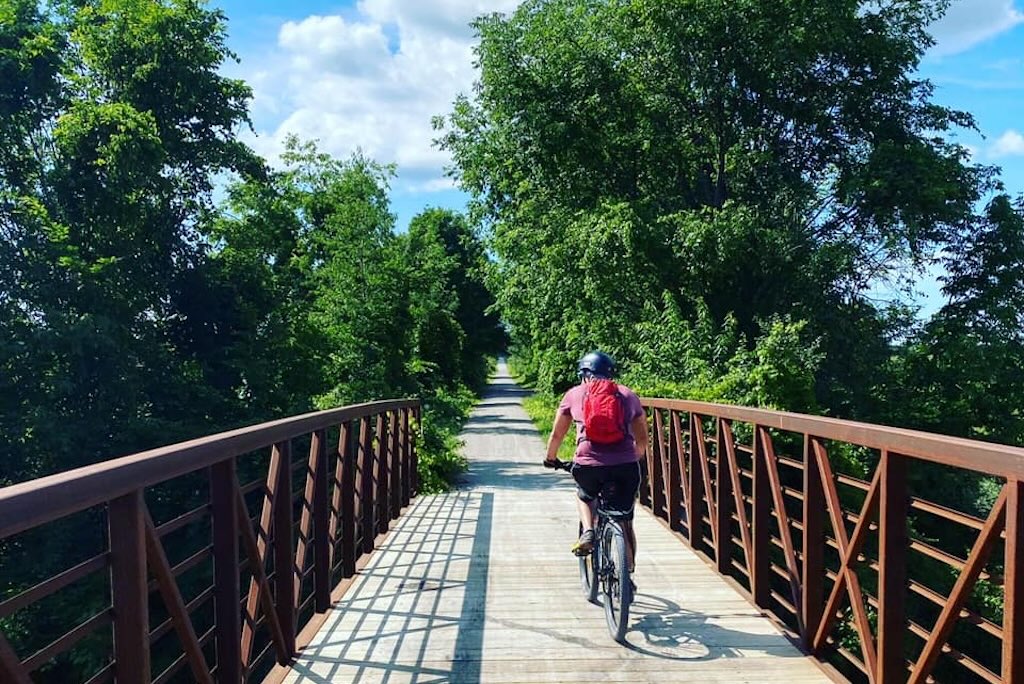
Guelph to Goderich Rail Trail (photo: Instagram @g2grailtrail)
7. Iron Horse Trail (Alberta)
In Alberta, the Iron Horse Trail is a 300-kilometer multi-use path that runs through the Lakeland region, offering a back-to-nature experience for cyclists, hikers, and even horseback riders. The unpaved surface and remote setting give this trail a rustic feel, perfect for those seeking solitude and adventure. The trail traverses dense forests, open prairies, and alongside sparkling lakes, offering a constantly changing landscape.
The Iron Horse Trail (photo at top: Brandon Born) passes through small, welcoming towns where you can find rest stops, historic sites, and accommodations. One of the highlights of this trail is the access to Cold Lake, a popular spot for swimming, fishing, and wildlife watching. While the trail’s remote location may not appeal to everyone, it’s a fantastic option for those looking to escape into nature and experience Alberta’s rugged wilderness.

